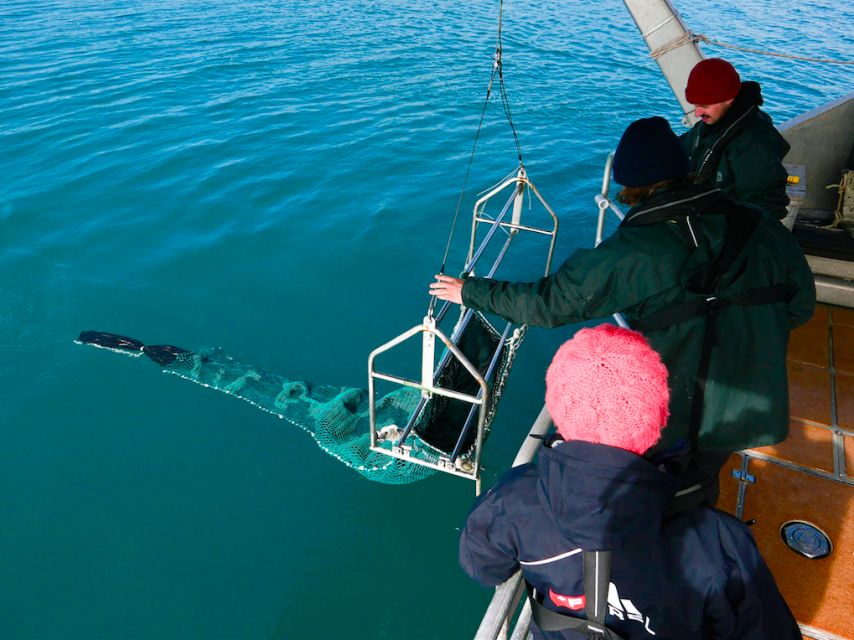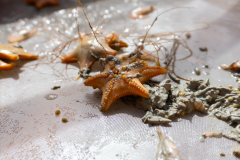In all ecosystems, there is a food web, or food chain: basically it’s who eats who and who produces the energy.
There are two types of fjord in Greenland: those with a glacier terminating on land (« land-terminating ») and those that terminate in the water (« marine-terminating »). The type of fjord has an impact on water mixing and, ultimately, on the nutrient supply available to benthic organisms. The aim of the isotope and lipid analyses is to try to understand how the type of glacier can affect the benthic food web and energy transfers. To collect the organisms, we use an Agassiz-type trawl net, which is a metal frame fitted with a chain and a net that is sent down to a depth of around 200 meters and pulled a certain distance behind FOREL. The organisms are then frozen in a freezer onboard FOREL and isotope and lipid analyses will be carried out later in the year.
*Dr. Philippe Archambault (PhD) is a Professor in the Department of Biology at Université Laval, in Québec City. He is also a Scientific Director of the Canadian Network of Centers of Excellence, ArcticNet. He is a researcher who strives to link fundamental biodiversity questions and theoretical research on global change and its effects on ecosystems functioning to applied science and policy-making.He is strongly engaged in training the next generation of marine scientists.

Photos : @valentinproult




